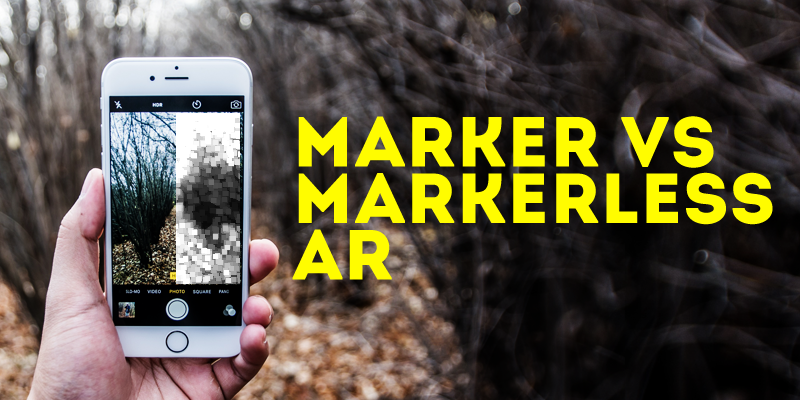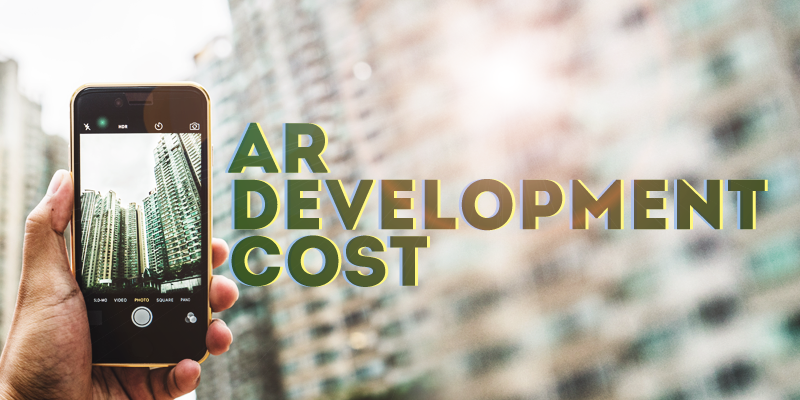Completely revolutionizing the digital spectrum, Augmented Reality integrates a user’s surrounding environment with a digitized live image or picture in real time producing a spectacular virtual result.
The public consensus about AR is that much like virtual reality it is mostly used for entertainment purposes only. However, that’s not necessarily the case.
Augmented reality is a much bigger technological tool than its immersive counterpart and is useful for and used in a number of industry sectors around the world. While industry reports from the likes of Digi-Capital predict the VR/AR market to hit a grand value of $108 billion in revenue and returns, the investment management giant Goldman Sachs examines the diverse potential of AR applications and their growth in the coming years.
According to the published report, AR is expected to make significant headway in the enterprise and public sector. It is steadily coming up to par with live events and video games- the two most promising uses of the AR software. Before long, it will be the tool of choice for industrial, military, and medical applications, along with real estate, retail, and education. AR is and will continue to grow in the e-commerce sector, moving through to digital marketing, as well as geolocation tagging.
Industry growth and advancements have transitioned AR into a more refined version of itself. One such advancement has been the introduction and use of markerless augmented reality systems in lieu of Marker-based ones. Here is a detailed description of both, marker-based and markerless augmented reality systems.
Understanding Marker Based AR
Image recognition is an imperative component of augmented reality systems. By use of identifying visual markers already embedded within the system, physical world objects are detected for superimposition of virtual elements. In order for an AR application to estimate the orientation and position of a camera with respect to the real world frame, most applications employ a tracking technique known as marker based augmented reality.
This form of tracking was introduced in AR approximately a decade or so ago. The marker tracking allows the use of a digital image to identify optical squares or markers and gauge their relative orientation to the camera itself.

Augmented reality plane image.
Source: AppReal-VR portfolio.
The optical square marker usually consists of a black square within a white box of a predefined size. It is the black square which is encoded with the ID of the marker. A variety of techniques is used which decode the marker by cross-matching with it. Once you begin using the marker-based augmented reality system with a digital device, the image of the physical world captured by your camera is converted into a grayscale image to expedite the image processing algorithm.
The algorithm then uses the image of the camera as well as the decoded marker ID to augment the virtual object onto the physical world model. By focusing the camera of whichever digital device you are using to deploy the augmented reality app on the specified markers, the app is able to retrieve the information stored to display the three-dimensional virtual object accurately.
Some of the examples of marker-based augmented reality applications or devices include Microsoft 2D Tag’s (now known as ScanLife), Popcode, and of course, Google Goggles.
Markerless Augmented Reality
New advances in the mobile hardware and software technologies led to the recent introduction of markerless augmented reality. This approach eliminated the need for 3D object tracking systems, overcoming the interactivity limitations marker-based augmented reality placed on the range of images encapsulated within the markers.
Businesses realizing the potential of AR apps want custom yet affordable jobs done. Countless factors affect and alter the augmented reality application cost.
Markerless augmented reality technique allows the use of any and all parts of the physical environment as the target or base for the placement of superimposed virtual objects. Markerless AR depends on the natural features of a surrounding rather than the fiducial identifying markers. What’s more, some markerless systems have the ability to extract and store information and characteristics about the environments they are used on for later usage. When used in smartphones and other digital devices, the markerless AR system typically makes use of the GPS feature in-built in the device in order to locate and interact with the available augmented reality resources.
Completely non-invasive, lighter and with a larger capacity for images, the markerless augmented reality system is now much preferred method of image recognition as compared to the marker-based counterpart.
Some of the most common examples of augmented reality programs which use markerless interaction includes:
- ARIS.
An open source AR, and interactive storytelling application.
- Aurasma.
An application which makes use of various smartphone features to display interactive content superimposed on actual surrounding area environment.
An application famous for being one of the most complex markerless augmented reality systems available in the market at the moment. This app, available for download for both iPhones and Android devices, allows the user to create augmented materials such as postcards, or flyers and can even include social media links and video messages.
- Google’s Tango.
An up and coming platform which uses the camera vision to detect and scan the surrounding environment in real-time and create a virtual one to superimpose it without the utilization of any external signals or GPS.
Just by holding up your smartphone you are able to see various virtual objects and information displayed right on top of the physical world image surrounding you. An in-testing project with further updates expected, Tango will, in the near future, allow it’s users to navigate indoor locations of museums, stores and other places with directions directly available onto the surrounding scenery.
How Can AppReal-VR Help?
AppReal-VR is a technology firm armed with a number of augmented and virtual reality development veterans who know the ins and outs of the industry’s latest obsession. Creating customized VR and AR applications for clients, big and small, from all across the globe, this team of highly dedicated professionals is well-versed in the art of delivering what the client requires.
A market-leading agency AppReal provides branded apps with custom features in both markerless and marker-based augmented reality with explicit navigations, animations, user interfaces and much more.
If you find yourself in need of a completely specified augmented reality application, feel free to contact us today.

 (15 votes, average: 4.00 out of 5)
(15 votes, average: 4.00 out of 5)
